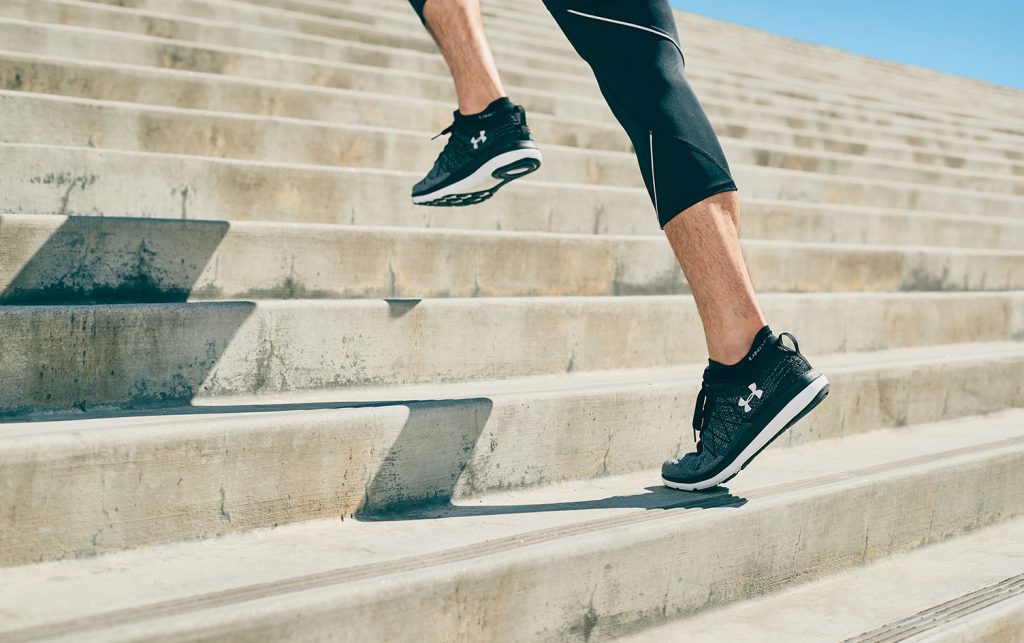
Right now you aren’t running as fast as you could, standing as tall as you should or likely to live as long as you would if you paid more attention to your feet.
Does that sound like an exaggeration? Consider this: The medical and fitness communities have known for a while that your grip is a reliable indicator of longevity. But an emerging field of research indicates the strength of your feet might be an even better measuring stick for your health.
For example, a team of Japanese researchers examined the toe-flexor strength of 1,400-plus men across various age groups. (Toe flexors are muscles like the abductor hallucis, which lets you lift and wiggle your big toe.) The scientists found they could tell how well people took care of themselves based on the test results. The data accurately predicted a person’s age, sleep, exercise and drinking habits. They also observed that foot strength started declining at an earlier age than grip strength — and fell off more dramatically than grip strength over time.
That’s bad news when you consider that the muscles in your feet are very much involved with balance control, and that as you get older, falls are a common cause of death. But we’re not just talking about far away, future problems here. Weak feet and ankles may be holding back your athletic performance right now.
“Foot and ankle strength crosses over into everything you do,” says Dr. Joel Seedman, who trains and coaches high-level athletes and regular Joes alike outside of Atlanta, Georgia. “Without proper foot and ankle activation, it’s impossible to have ideal mechanics on any lower-body movement.” Seedman describes having weak feet and ankles as “a massive energy leak.” If you’re a runner, that means you’re losing force you could use to propel you forward. “It slows you down,” Seedman says.
The good news? You can be on the road to recovery starting right now. Just add these three exercises from Seedman to your repertoire. They require no equipment and can be performed anywhere, at any time. But adding them at the beginning of workouts fires up not only your feet and ankles, but your entire lower body.
READ MORE > 7 MOVES FOR STRONGER, HEALTHIER FEET
“It’s impossible to get full recruitment of the posterior chain without proper foot and ankle activation,” Seedman says. “Once you start firing the feet and ankles, most people start to feel a huge burn in their posterior chain, because it starts sending better neural signaling all the way up. It even starts affecting your posture, upper body and neck.”
1. SINGLE-LEG STAND
This one is as basic as it sounds: Just lift one leg off the ground and balance on the other. You should find that within a short time the muscles in your butt and along the back of your legs have to fire to help keep you upright.
No matter whether you’re a marathoner or a hard-core CrossFitter, you can benefit from this move. “If I had to throw one exercise out there that’s a cure-all for everyone, this would be it,” Seedman says.
If you’re a strength and power athlete, load the exercise by holding a weight for 15–20 seconds. Or if you’re a runner, do these with your bodyweight or just a light weight and hold for 1–2 minutes per side.
2. ANKLE PUSH-OUTS
Performing ankle push-outs is simple. You just do three things: Stand tall; press your big toes into the ground and push your ankles laterally outward. “I’ve seen this do wonders for my clients,” Seedman says. “Often, they can notice the difference within a few days — especially if they’re religious about doing it multiple times per day.”
3. TOE RAISES
This exercise is essentially the opposite of a calf raise. While calf raises have you go up onto your toes to work the backside of your lower legs, in toe raises you keep your feet flat on the ground, lift your toes as high as you can, and spread them as wide as you can.
“It strengthens the muscles around both sides of the shins — the peroneals and tibialis anterior — which are basically toe flexors,” Seedman says. “The ability to dorsiflex, or pull your toes back toward your shins, is a critical aspect of foot and ankle function. I see even high-level athletes struggle with this big time.”
Try it and you’ll find the front of your shins might burn faster than you think. You can take the exercise a step further by adding a calf raise and performing the move with weight.
The post How Foot Strength Impacts Longevity and 3 Exercises appeared first on Under Armour.
(via MyFitnessPal Blog)
